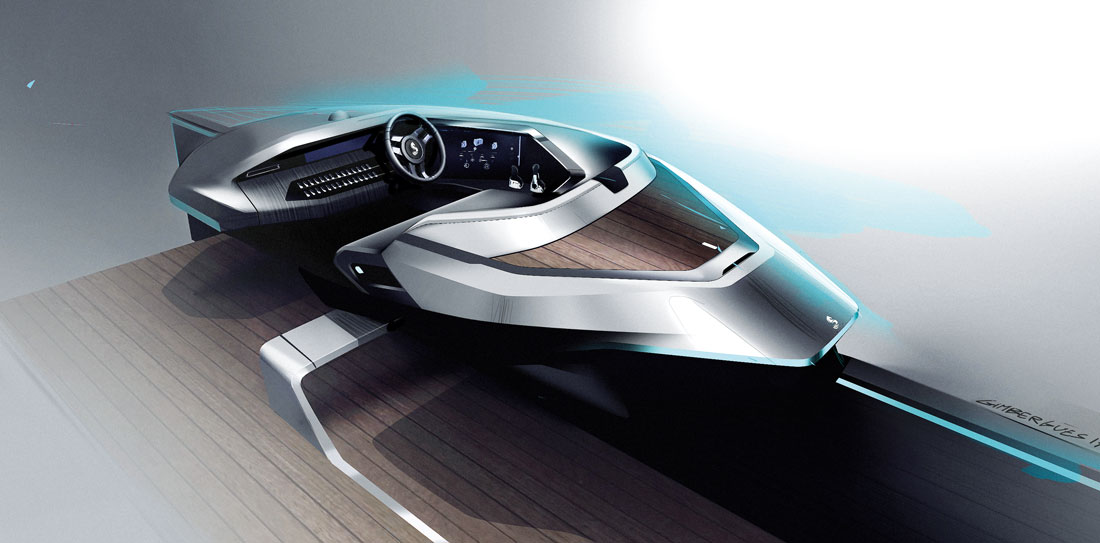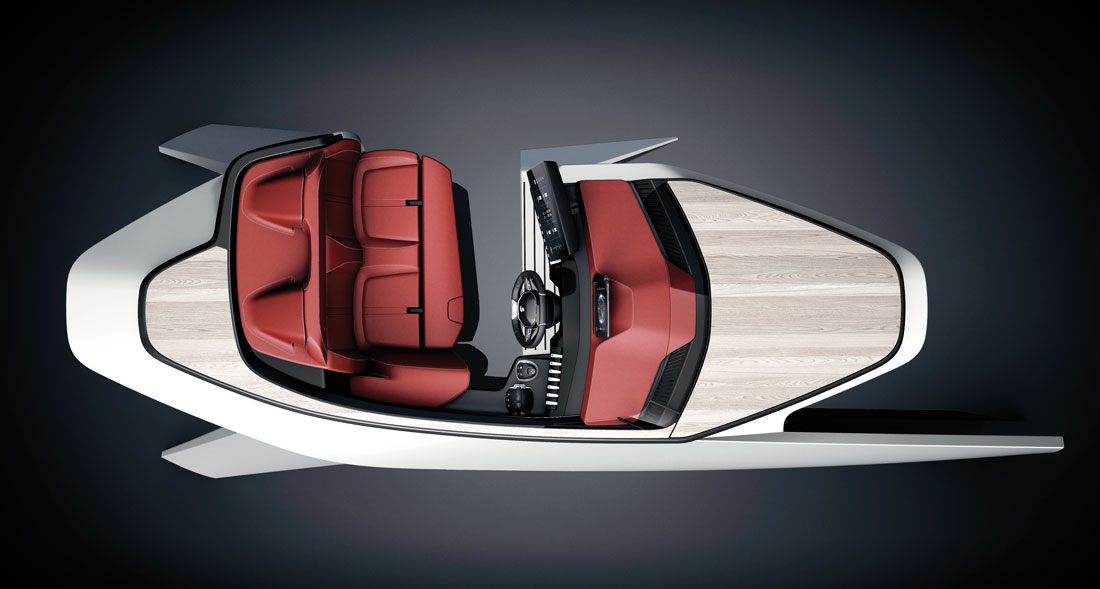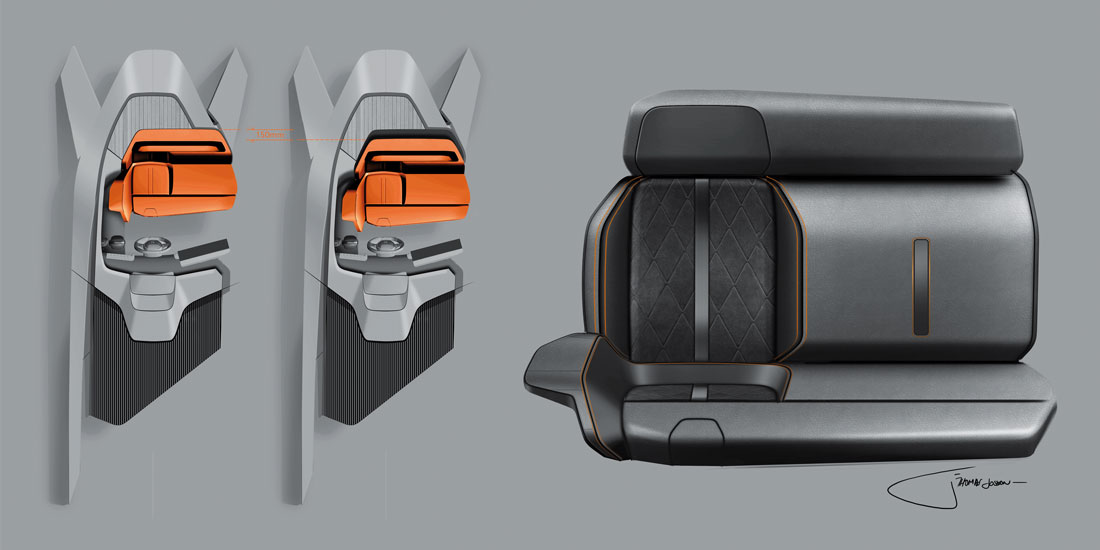Instrumentation repositioned in line with the driver’s visual axis, small, contoured steering wheel, multi-function touch screen at your fingertips. These are the three elements that define the ergonomic approach of the iCockpit with which, since 2012, Peugeot has been rewriting the architecture around the driver in over four million cars. Today, the creative horizon shifts its attention to the water in an operation shared with Benetau, the French nautical leader, which has generated an unusually interesting hybridisation of skills: the driving seat for Sea Drive Concept boats.
“We started from considerations relating to layout of the controls and the driver’s operational references”, explains Cathal Loughnane, head of Peugeot Design Lab, the independent structure that in Vélizy, within the PSA Research and Development Centre, acts autonomously as a design studio for outside customers. “The most important ergonomics experts work in cars. Here, then, by tradition, the work team re-forms for each new task, adding the most suitable people where necessary from among Lion model designers: so we can always call on professional skills that are exceptionally suited to the tasks assigned. In this case, even more than usual”.
The design process got under way with the observation that a human being takes only one position in cars, but can behave in three different ways in a boat: you can in fact drive seated, standing or when the boat’s stationary. This variety of interaction forced the designers to thoroughly re-think the connotation of the area around the driver. “Initially, it was even necessary to make a 1:1 scale polystyrene model with holes at different points to be able to move switches, joysticks and accelerator levers. We started from scratch”, continues Loughnane.
The experimentation then continued through state-of-the-art solutions, such as a five-sided oleographic simulator whose costs are made sustainable by applications for the automotive industry, with cleanliness, dynamism and simplicity of use being the inspiring criteria. “It wasn’t a question of revolutionising the habits of those who are interested in boating. We are not for innovation for its own sake. The intention is to rationalise and make more usable a configuration that, to start with, is legible and reassuring”.
During the following stages, the existing Benetau-patented Ship Control module, which enables many on-board functions to be controlled by a form of home automation, was filled up with new content. The result is reminiscent of the automotive in the spatial relationships between certain elements (such as the steering wheel and the instrument panel, which can be separated here and transformed into a tablet), but is decidedly in line with the needs of nautical people. And it gives food for thought to the designers of tomorrow, who increasingly, regardless of their field, will have to move between digital and evolutions of liveability.
Full article in Auto&Design no. 229
























